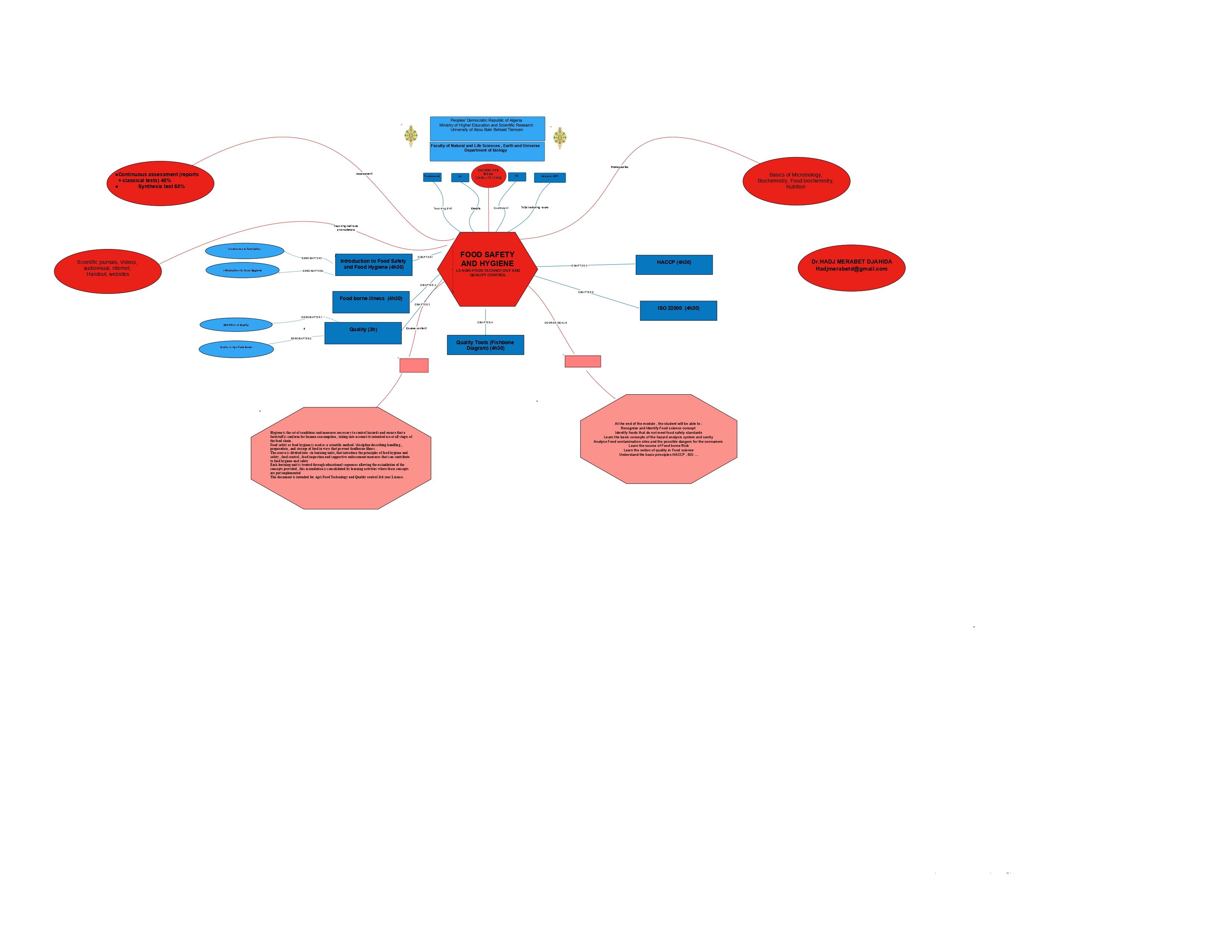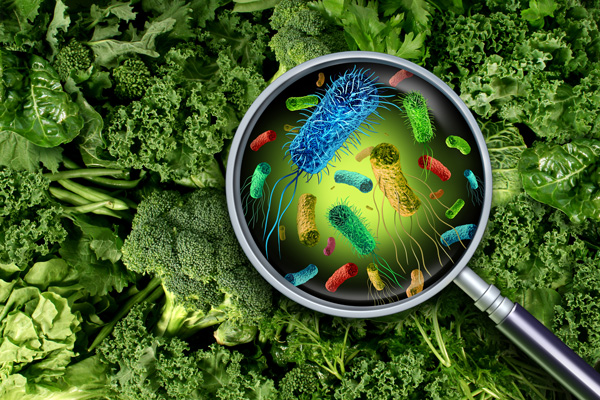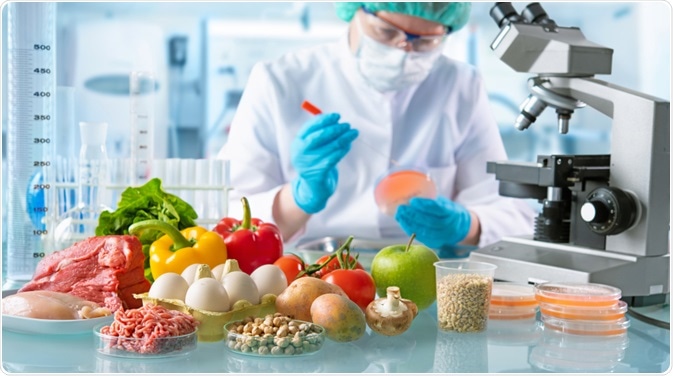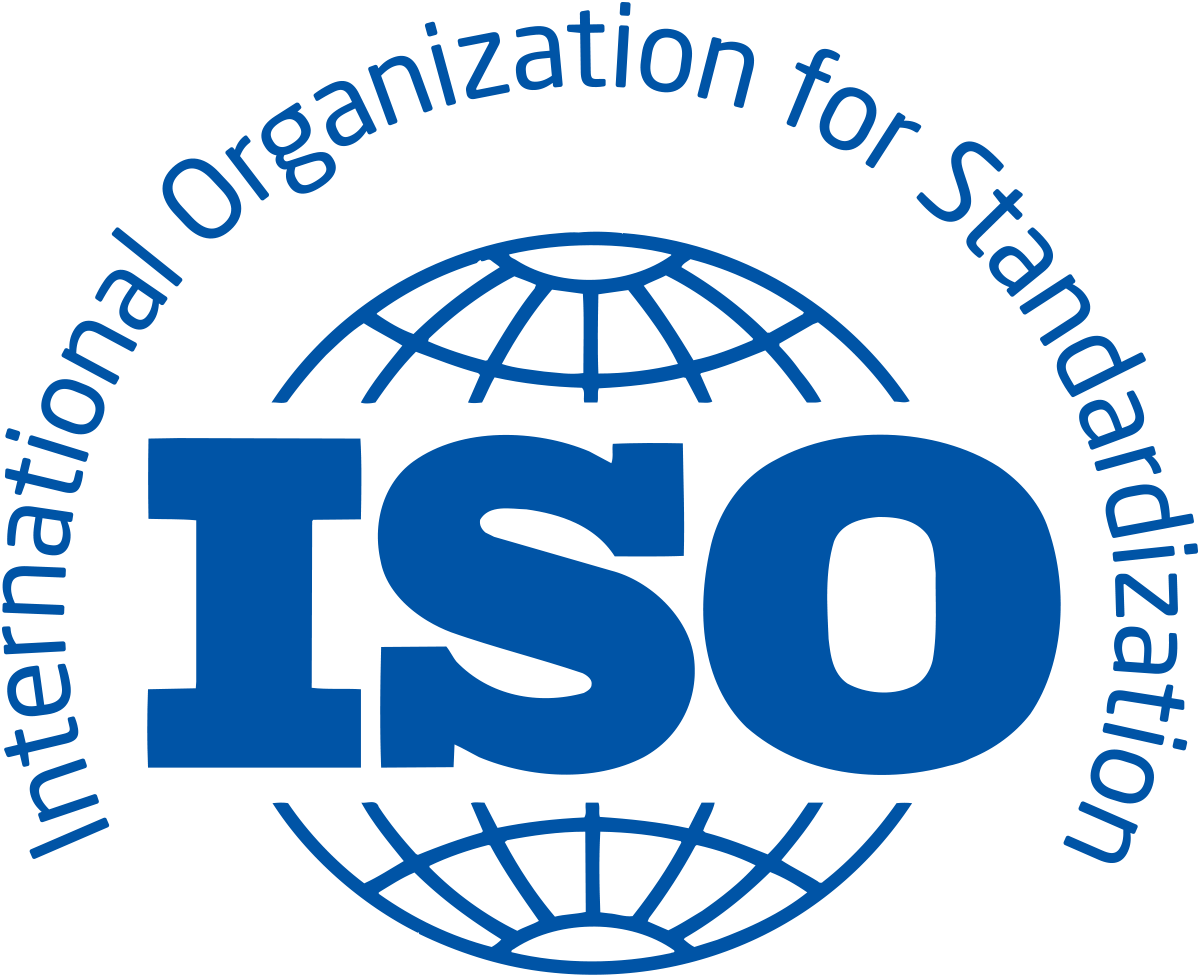Hygiène et Sécurité des aliments S1 2025 (Food safety and hygiene)
Topic outline
-

The set of circumstances and actions required to manage risks and guarantee that a food item is fit for human consumption while considering its intended use at every level of the food chain is known as hygiene. Food safety is a scientific field that describes how to handle, prepare, and store food in a way that minimizes the risk of cöntracting a foöd-borne illness. A food-borne disease outbreak is the emergence of numerous cases of a cömmon sickness brought on by eating that food. Everyone acknowledges that public health is a factor in food safety. To guarantee food safety from farm to table, preventative and instructional methods are usually combined with a legally required regulatory approach.
It's a serious issue that impacts everyone on the planet. Availability and safety of food supplies are becoming more and more important to many governments worldwide.
The course is divided into seven learning units, that introduce the principles of food hygiene and safety, food control, food inspection and supportive enforcement measures that can contribute to food hygiene and safety. Each learning unit is treated through educational sequences allowing the assimilation of the concepts provided, this assimilation is consolidated by learning activities where these concepts are put implemented.
This document is intended for agri-food technology and quality control 3rd year license.
-

- Basic data of the course
Academic Unit : University of Abou Bakr Belkaid Tlemcen
Faculty of Natural and Life Sciences and Earth and Universe
Department: Agronomy
Course Title : Food Safety and Hygiene
Degree : Agri-Food Technology And Quality Control 3rd Year License.
Teaching Unit : Fundamental
Coefficient : 02
Credits : 04
Total lecturing hours: Semester 45 H (Course per Weak (1h30 ) + 1h30 Practical work)
Total Exercice hours: 12 H
Lecturer : Dr Djahida HADJ MERABET
Email : djahida.hadjmerabet@univ-tlemcen.dz ; hadjmerabetd@gmail.com
Availability: Laboratory of Ppabionut (Physiology, physiopathology and Biochemistry of Nutrition Laboratory) Every Sunday From 9a.m to 11a.m.
-

At the end of the module, in relation to the subjects covered, the student must be able to:
- Recognize and identifiy basic food science concept and terminology
- Identify foods that do not meet food safety standards;
- Learn the basic concepts of the Hazard Analysis System and sanity in general;
- Analyze food contamination sites and the possible dangers for the customer.
- Learn the notion of quality in Food Science
- Learn the source of Foodborne Risk
- Understand the basic principles of HACCP, ISO and SQF
-
The course will be attended for 13 weeks with a duration of 1 hour 30 min for one lecture, when there will be discussed the orietical concepts and will be offered explanations regarding the food safety, and 1 hour 30 of group practice each week. During these hours, there will be a discussion with concrete examples on the specific subject covered during the conference, and field trips to food processing companies to better understand food hygiene and safety measures.
-
- Learning activities
The learning activities offered in the Food Safety and Hygiene course are based on multiple-choice questions MCQ, and single-choice questions SCQ, blank questions, free questions accompanied by a test correction.
- Assessment methods
Successful completion of this course will be validated by a final average ≥ 10/20 T . The final grade is calculated based on :
· A Final Evaluation (Synthesis Exam = Summative Evaluation)
This evaluation covers the entire program of this course during the semester, during this exam, which counts for 60% of the final average:
· Continuous evaluation (Continuous activities = Formative Evaluation)
An evaluation during the directed work and which is calculated based on a weighting of 40%. This evaluation allows students to earn points throughout the semester.
-

Students must already have
- Basics of Microbiology, Biochemistry, Food biochemistry, Nutrition
- Basic understanding of the English language (Level B1) in terms of listening , reading comprehension, and writing
-
The course is divided into seven learning units, that introduce the principles of food hygiene and safety, food control, food inspection and supportive enforcement measures that can contribute to food hygiene and safety. Each learning unit is treated through educational sequences allowing the assimilation of the concepts provided, this assimilation is consolidated by learning activities where these concepts are put implemented.
This document is intended for agri-food technology and quality control 3rd year license.

-
•Food Safety is a scientific discipline describing handling, preparation, storage and serving of food in ways that prevent food borne illness. This includes a number of routines that should be followed to avoid potentially severe health hazards.
At the end of the Chapter I , in relation to the subjects covered, the student must be able to:
· Recognize the importance of food safety;
· Learn the food contamination and different types of contamination;
-
Is the result of eating contaminated, spoiled, or toxic food. Most common symptoms of food poisoning include nausea, vomiting and diarrhea.
According to the centers for disease control and prevention (CDC) 1 in 6 people will contract some form of food poisoning in every year.The aims of this course are:
- Provide students with the meaning of FOOD BORNE ILLNESS
- Provide students with a basics of FOOD BORNE ILLNESS
- Understand the DIFFERENCES BETWEEN INFECTION & INTOXICATION






